SAMANDAG, Turkey — After powerful earthquakes struck southern
Turkey, Eylem Sahutoglu and her family endured two weeks of freezing nights
under a blue tarpaulin. Then word came from government engineers who had
inspected their building: They could return home.
اضافة اعلان
But Monday night, before they could move back into their house,
in Hatay province, the earth began shaking again. Another powerful quake had
hit the region.
“My legs went numb,” Sahutoglu said, recalling how she had
fainted in her front yard as the house crumbled at her feet.
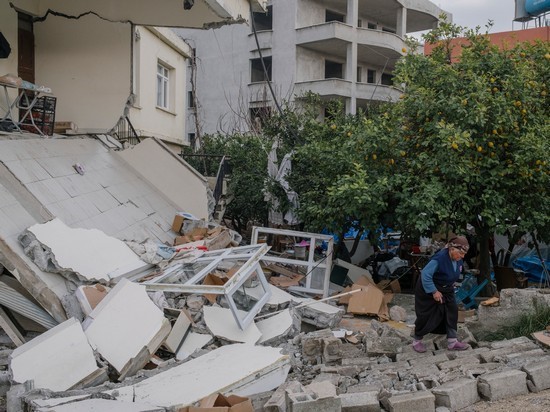 A collapsed home in
Samandag, Turkey on February 20, 2023.
A collapsed home in
Samandag, Turkey on February 20, 2023.
Sahutoglu’s ordeal is emblematic of the plight of thousands of
Turks who were preparing to return home — only to be thrown deeper into
uncertainty, lurching from one calamity to the next.
Hatay is a tableau of life at extremes, shaped by devastated
infrastructure and pressing human need after a 7.8-magnitude earthquake struck
Februaryraury 6, followed by a very strong aftershock the same day. The quakes
killed more than 43,000 in Turkey and more than 5,500 in Syria. Then Monday’s
6.3-magnitude earthquake struck.
Despite the flow of international aid into Turkey, the nearly
1.7 million displaced people in the quake zone face the almost impossible
challenge of rebuilding their lives in squalid conditions.
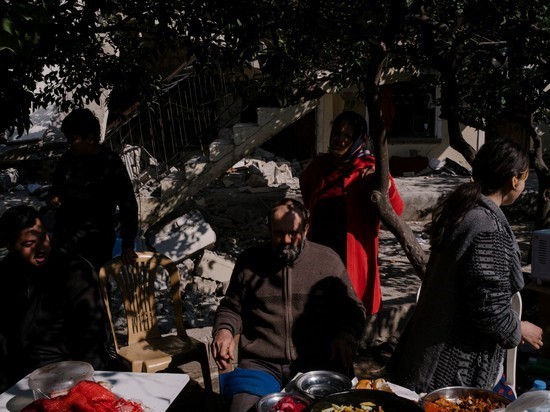 The Sahutoglu family
eating breakfast near their makeshift tent, where they have taken shelter since
their house collapsed, in Samandag, Turkey on February 22, 2023.
The Sahutoglu family
eating breakfast near their makeshift tent, where they have taken shelter since
their house collapsed, in Samandag, Turkey on February 22, 2023.
About 750,000 are sheltering in tents, breathing air thick with
pollutants unleashed from tombs of rubble as tectonic plates continue to
rumble, reminders that a fresh disaster could strike at any moment. The
extensive damage to infrastructure is swiftly turning hard-hit communities into
petri dishes for disease, according to health care officials and residents.
“They did not even ask me my name — they just told me that the building was strong.”
More than 800,000 people have fled the quake zone since the
first earthquake, according to Yunus Sezer, head of Turkey’s emergency
management agency, AFAD. About 350,000 others have been evacuated from the
affected zone via trains, planes or buses supplied by the government.
“Even when we are standing still, we feel like we are moving,”
said Sahutoglu’s son, Ahmet, 20. He added that the unpredictability of the
aftershocks, coupled with the harsh living environment, had prompted families
to vacate land they have owned for generations and to move to coastal cities
such as Antalya, Mersin, or Konya, in central Turkey.
The exodus of residents from Hatay has turned the constellation
of historic cities along the Mediterranean into ghost towns.
Thousands of engineers have fanned out across the wrecked areas
to assess the safety of buildings left standing, as residents wait in shelters,
many too afraid to enter their homes even if they are intact.
 A woman sleeping in a
tent in a garden in Samandag, Turkey on February 21, 2023.
A woman sleeping in a
tent in a garden in Samandag, Turkey on February 21, 2023.
Recalling how the two engineers from the Ministry of
Urbanization told her family to move back in, Sahutoglu said, “It was a moment
of hope.” But “they were barely here for two minutes,” she added.
The inspectors had briskly hammered chunks of plaster from the
walls of the 45-year-old building to reveal the concrete underneath, before
deeming it safe.
“They did not even ask me my name — they just told me that the
building was strong,” she said.
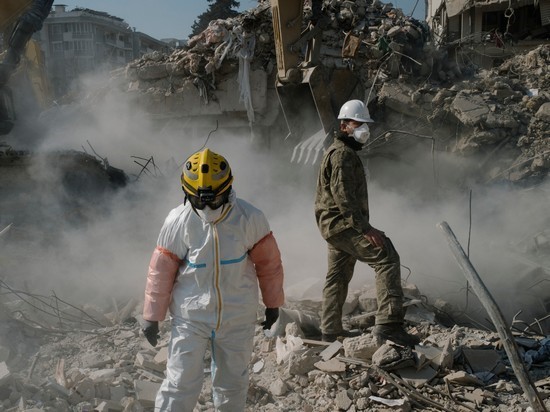 Workers at the site of a collapsed building in Antakya,
Turkey on February 20, 2023.
Workers at the site of a collapsed building in Antakya,
Turkey on February 20, 2023.
She decided to trust them.
Her family of 14 was impatient to vacate the crowded tent
pitched in the yard, which sits on the main street of Samandag, one of a series
of hamlets that dot the coastal road meandering south through the region of
Hatay.
Sahutoglu began preparing the house for their return: She
scrubbed the floors and countertops, which were coated with dust; she washed
blankets and laid them on her rooftop to dry; and she sent her son out to
collect tomatoes for a warm breakfast the next morning.
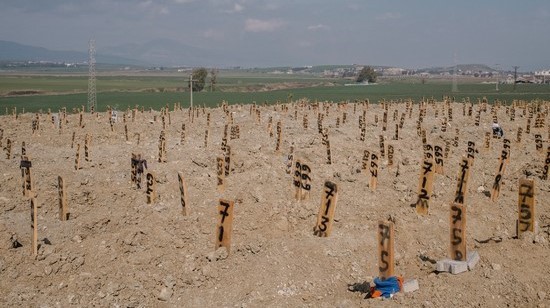 Numbered boards in a
cemetery in Antakya, Turkey, where unidentified earthquake victims have been
laid to rest, on February 21, 2023.
Numbered boards in a
cemetery in Antakya, Turkey, where unidentified earthquake victims have been
laid to rest, on February 21, 2023.
“Finally, I felt like I was at home,” she said. But hours later,
she heard a familiar rumble from the mountains, and the walls began to shudder.
The new quake had struck near Samandag.
When she regained consciousness, the washed blankets were
slanted toward her from atop the caved-in ceiling, just as she had left them;
the crate of tomatoes, miraculously intact, was perched outside her son’s
bedroom door.
“They told us we were safe,” Sahutoglu said. “Now what can we do
— we are back to living with the chickens.”
The Turkish government has been criticized for the slow pace of
its recovery effort, which is being overseen by AFAD. It has confronted
logistical complexities in removing mountains of debris and identifying safe
relocation sites for those displaced.
The Sahutoglus’ house is one of many buildings that crumbled
into a desolate moonscape, replacing the spirited main road of ramshackle
buildings and storefronts that ran through the district.
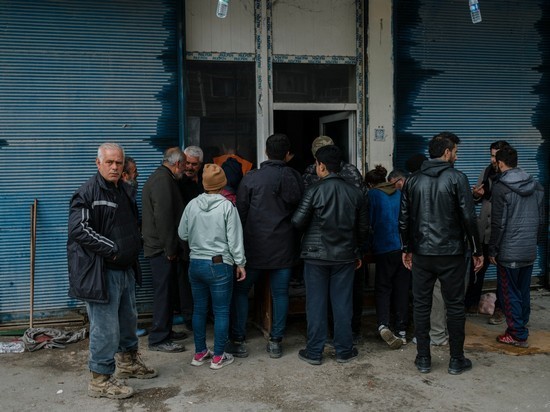 People line up to receive food aid in Samandag, Turkey on February
21, 2023.
People line up to receive food aid in Samandag, Turkey on February
21, 2023.
“People here love their
neighbors,” said Ilknur Sahutoglu, 26, whose home was destroyed Monday. She sat
in her father’s hulking six-wheel truck, contemplating the ruination of the
world she once knew. “My childhood was in that house — and now it is gone,” she
said, in tears.
Other trucks, ferrying water canisters and food, kicked up dust
as they headed south. A throng of private cars, stacked with mattresses,
couches and other belongings, moved in the opposite direction.
If she could steal back five minutes to run inside the house
when the quake hit, she said, “I would make sure to grab an early photograph of
my father and mother,” who died last February.
Since the earthquake, she said, she and her sisters have been
pleading with their father to grab a chance at another life.
“He is too attached to this place and all our memories here,”
she said, adding that she worried living conditions had grown untenable.
Most of the water in the district has either stopped running or
has turned muddy. Her family’s private well is buried under the rubble of their
collapsed home.
“We can’t find enough water to wash our hands and faces,” she
said. She worked as a nurse in the nearby city of Antakya before the hospital
was destroyed in the first quake.
“This will be a huge problem here with regard to infections and
viruses entering the body,” she said, adding that her sister has bronchitis.
 A woman drinking water from a garden well in Samandag,
Turkey on February 22, 2023.
A woman drinking water from a garden well in Samandag,
Turkey on February 22, 2023.
Suleyman Altman, 42, a resident of Konya province, in central
Turkey, who helped organize an aid depot in a storefront in Samandag, said:
“Life has turned upside down again. Many people here decided to leave after the
second quake.”
Across the street from the Sahutoglus’ home, residents emerged
from tents with plastic containers and congregated outside the narrow
storefront, where they were served scoops of red soup and vermicelli noodles.
The storefront was evidence of how the crush of disasters can
rally communities to come together. But the depot will soon close, said Altman,
who will return north to his district by the end of the week. AFAD will
continue to deliver bottled water from across the country to the district.
Still, it will not nearly be enough for those who remain, he said.
“This will be a huge problem here with regard to infections and viruses entering the body.”
Joe English, a spokesperson for UNICEF, said that “without access
to safe drinking water and access to appropriate sanitation, the risk of
disease outbreaks soars” in the aftermath of such crises where “we see large
numbers of people forced from their homes and living in cramped conditions.”
Big natural disasters such as this month’s earthquake can
release toxins into the air from soil, homes, industrial-waste sites and other
sources, which are inhaled by residents who crowd into emergency shelters. This
could breed an array of ailments, according to experts, who say they are
increasingly worried about outbreaks of flu and respiratory illnesses in the
quake zone.
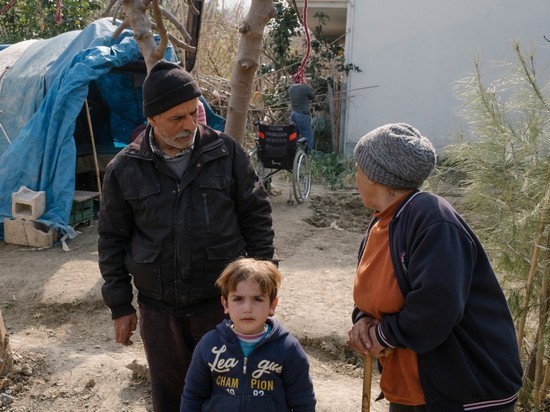 Displaced residents
of Samandag, Turkey near the makeshift tent where they have been sheltering
since the earthquake, on February 22, 2023.
Displaced residents
of Samandag, Turkey near the makeshift tent where they have been sheltering
since the earthquake, on February 22, 2023.
Doctors at a field hospital of 50 beds in Antakya, about 40km
north of Samandag, say they have seen an uptick of people with gastrointestinal
infections this week.
“Portable water systems have not been entirely set up yet, and
access to toilets and sheltering problems are substantial,” said Alpay Azap, a
professor of microbiology and infectious diseases at Ankara University, who
warned of an increase in bowel infections and skin rashes throughout the
disaster zone.
Despite the threat of disease and waning resources to help, some
families are refusing to leave.
Two days after their house collapsed, the Sahutoglus sat in the
early morning shade of lemon trees in their yard, riddled with rubble. Children
pumped brackish water from the earth to wash clothes as Ahmet shaved his
father’s beard with thick white foam.
“These trees are older than my children,” Eylem Sahutoglu said.
They fried potatoes in a blackened pan on burning wood and sat
around a plastic table. Breakfast included black olives they had retrieved from
the rubble.
“We were born here,” Sahutoglu said, “We have grown up here. We
will die here.”
Read more Lifestyle
Jordan News



